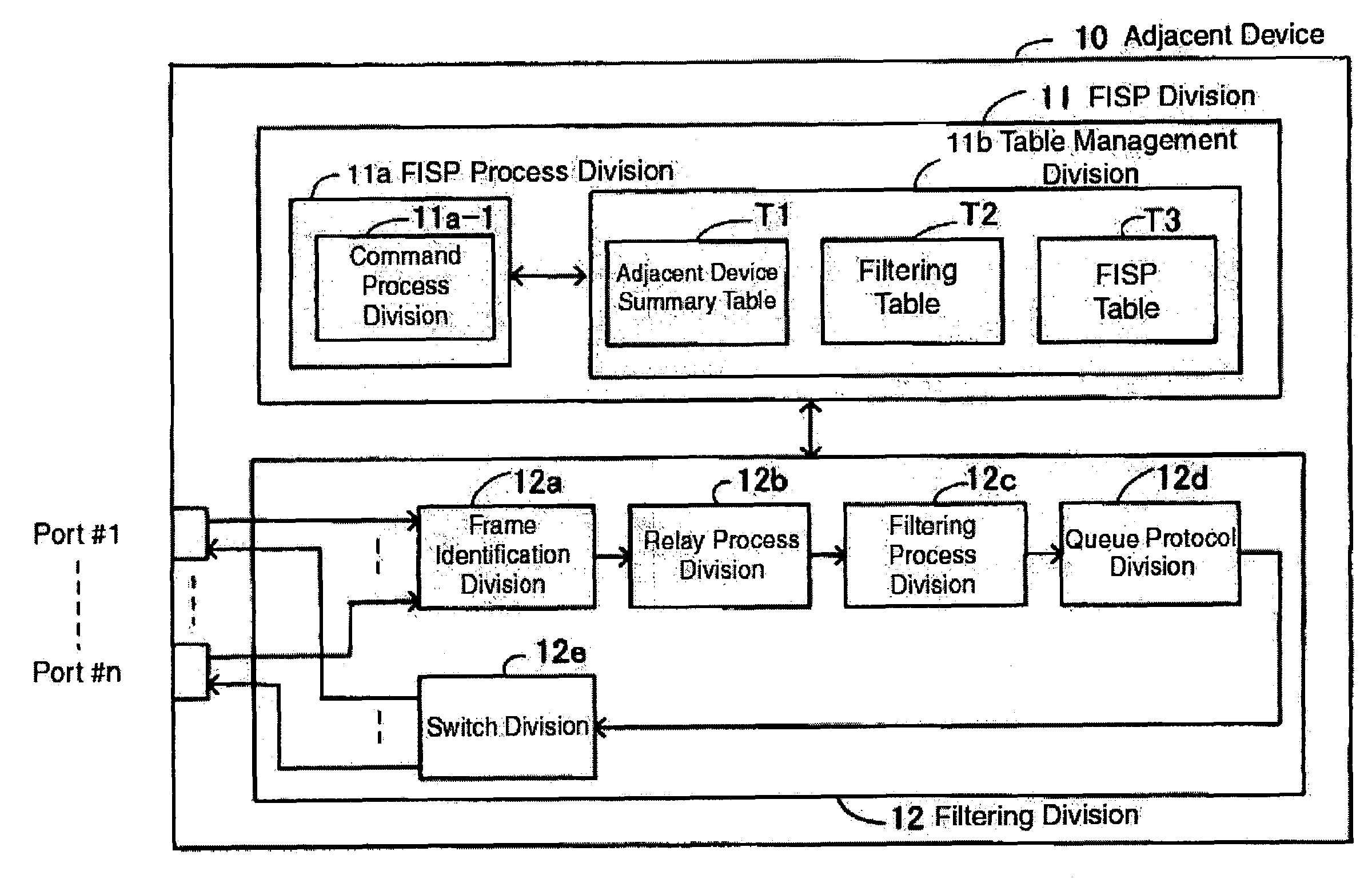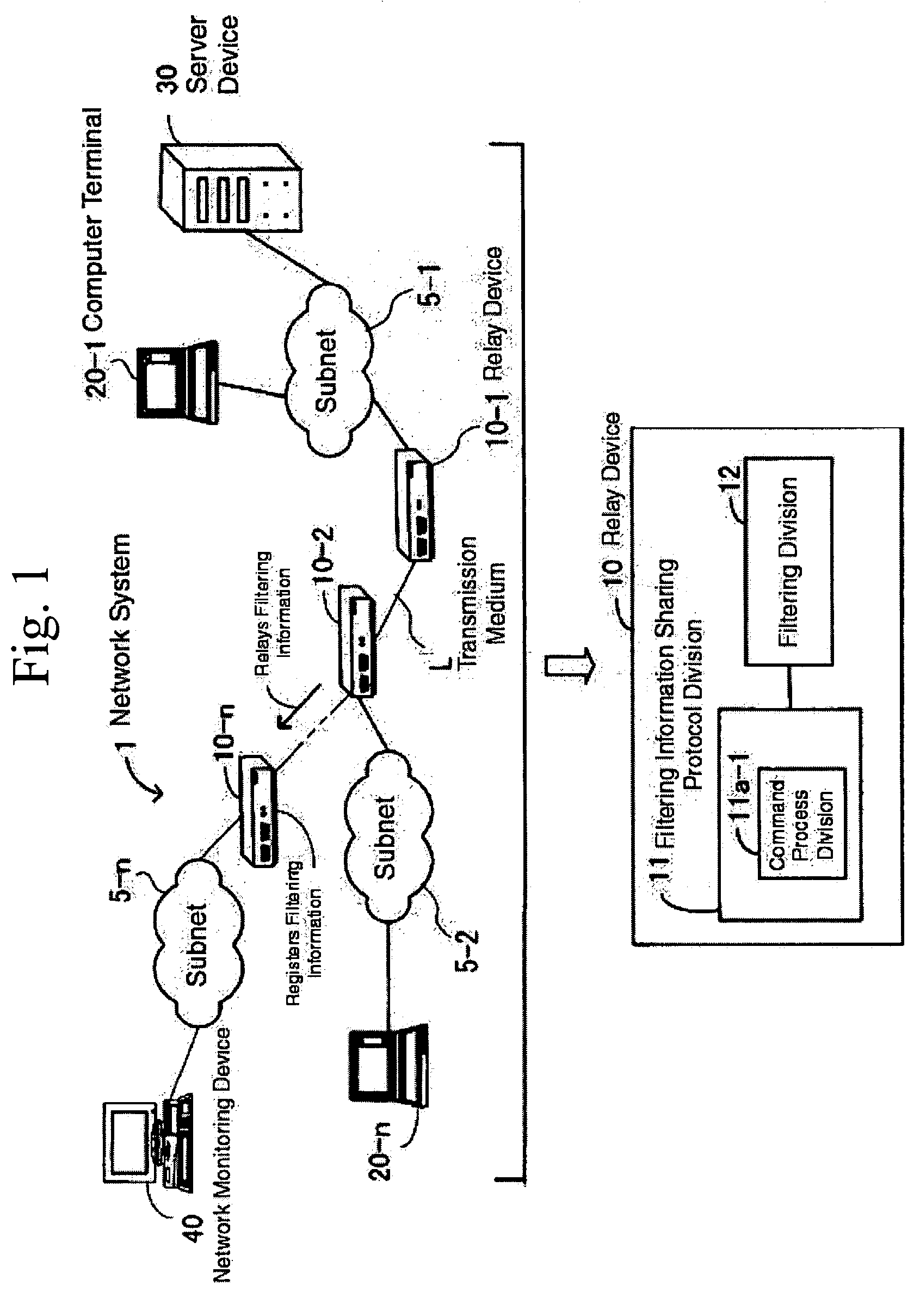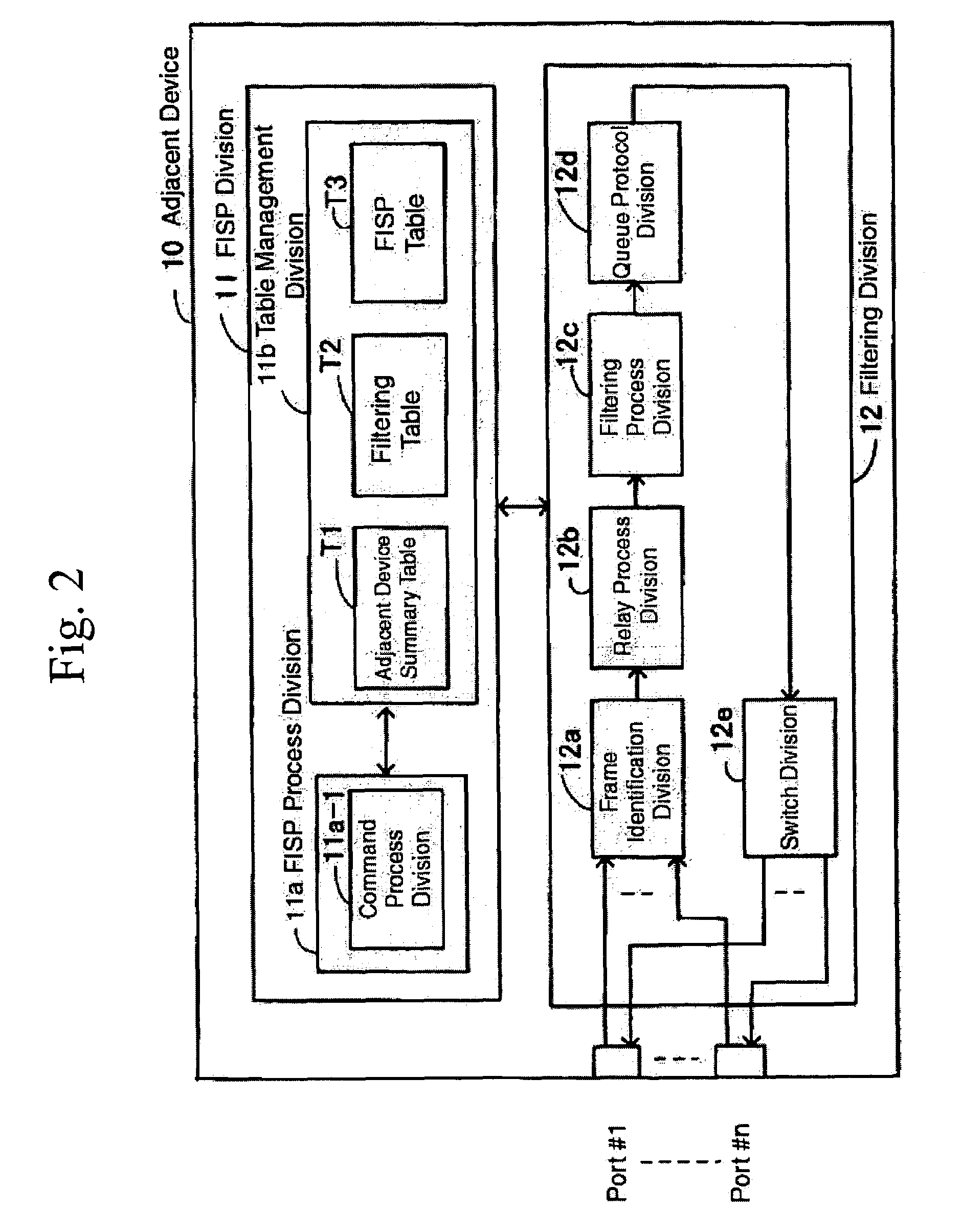Network system with shared filtering information
a network system and information filtering technology, applied in the field of network systems, can solve the problems of unauthorized access, web servers and ftp servers that exist on the network and implement information transferring services, and the corporate network is vulnerable to threats, so as to achieve the effect of improving security and lightening network load
- Summary
- Abstract
- Description
- Claims
- Application Information
AI Technical Summary
Benefits of technology
Problems solved by technology
Method used
Image
Examples
Embodiment Construction
[0045]The following explanation uses drawings of this invention's working form as reference. FIG. 1 is a fundamental drawing of this invention's network system. Network System 1 uses Transmission Medium L (can be either with wires or wireless) to connect each structural device; consists of Relay Devices 10-1˜10-n (general term “Relay Device 10”), Computer Terminals 20-1˜20-n, Server Device (hereinafter “Server”) 30, Network Monitoring Device 40, and Subnet 5-1˜5-n; and is a system that applies filtering on a network and transmits frames (or packets, cells. This invention will unify these terms).
[0046]Relay Device 10 consists of Filtering Information Sharing Protocol Division 11 and Filtering Division 12, and Filtering Information Sharing Protocol Device 11 includes Command Process Division 11a-1.
[0047]Command Process Division 11a-1 generates and parses commands that include filtering information for the sharing of necessary filtering information on the entire network. Filtering Info...
PUM
 Login to View More
Login to View More Abstract
Description
Claims
Application Information
 Login to View More
Login to View More - R&D
- Intellectual Property
- Life Sciences
- Materials
- Tech Scout
- Unparalleled Data Quality
- Higher Quality Content
- 60% Fewer Hallucinations
Browse by: Latest US Patents, China's latest patents, Technical Efficacy Thesaurus, Application Domain, Technology Topic, Popular Technical Reports.
© 2025 PatSnap. All rights reserved.Legal|Privacy policy|Modern Slavery Act Transparency Statement|Sitemap|About US| Contact US: help@patsnap.com



